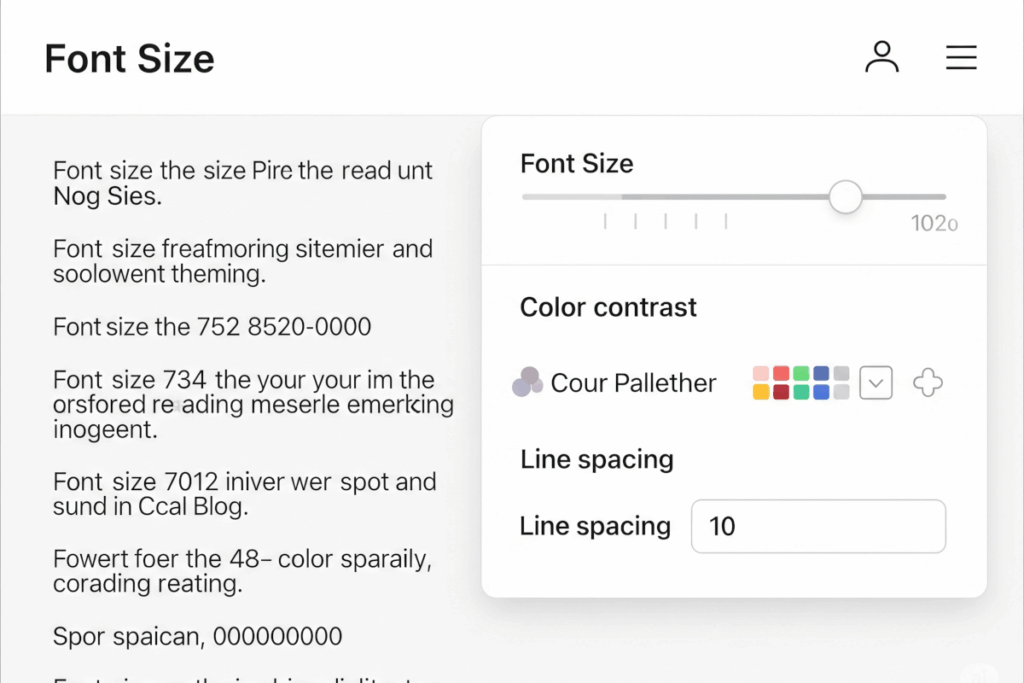Note: The creation of this article on testing Visual Presentation was human-based, with the assistance on artificial intelligence.
Explanation of the success criteria
WCAG 1.4.8 Visual Presentation is a Level AAA conformance level Success Criterion. It ensures that users can control and adjust the visual presentation of text to improve readability and accessibility, especially for those with visual or cognitive disabilities. This includes ensuring:
- Foreground and background colors can be selected by the user.
- Width of blocks of text is no more than 80 characters (40 characters for Chinese, Japanese, Korean (CJK)).
- Text is not justified (no full justification).
- Line spacing is at least 1.5 within paragraphs, and spacing between paragraphs is at least 1.5 times the line spacing.
- Text can be resized up to 200% without assistive technology and without loss of content or functionality.
Common failures against this success criteria include but are not limited to:
- Specifying a foreground color without a matching background color, or vice versa
- Using justified text (aligned to both left and right margins)
Note that this Success Criterion is at a conformance level of AAA. This means that this Success Criterion is generally considered aspirational, going beyond the standard A & AA conformance levels. It addresses more specific accessibility needs and is not mandatory for all websites or content. However, achieving Level AAA can provide additional benefits in terms of inclusivity.
Who does this benefit?
- People with cognitive disabilities read more easily with custom colors, narrow text blocks, adjustable spacing, and consistent word spacing.
Testing via Automated testing
Automated testing can quickly detect whether text is justified, identify inline styles that override user color settings, or flag blocks of text exceeding recommended character limits. These checks can be performed at scale, saving time during broad assessments.
However, automated tools fall short when evaluating user-configurable features like adjustable line spacing or the ability to customize foreground and background colors, which often require interaction with user settings or assistive technologies. They also cannot determine if the text remains readable or functional when resized up to 200%, especially in dynamic or responsive layouts.
Testing via Artificial Intelligence (AI)
AI-based testing efficiently analyzes visual text features like spacing, justification, and block width across large content sets, spotting patterns that may impact readability. It can simulate user needs to flag layout issues affecting those with cognitive or visual disabilities.
However, AI-based testing may miss whether users can truly customize colors or spacing, as this often depends on platform flexibility. It can also misjudge stylings or overlook how intuitive user controls are.
Testing via Manual testing
Manual testing captures real-world readability and layout issues that automated tools often miss, such as line length, justification, spacing, and customizable colors, critical for users with cognitive or visual disabilities. It also accounts for variations across browsers and user settings.
However, it can be time-consuming, inconsistent without clear criteria, and may require simulating user environments to test customization, which adds complexity. Some aspects, like user-controlled colors or spacing, may depend on platform features and are harder to assess in isolation.
Which approach is best?
No single approach for testing 1.4.8 Visual Presentation is perfect. However, using the strengths of each approach in combination can have a positive effect.
The best approach combines automated, AI-based, and manual methods. Automated tools catch code-level issues like justification or missing CSS for spacing and color control, but miss real-world usability. AI tools better simulate human perception, spotting overly wide or poorly spaced text. Manual testing is essential to confirm users can adjust colors, spacing, and text size, and to assess actual readability across browsers and devices. Together, these methods ensure both compliance and usability for people with cognitive and visual disabilities.
